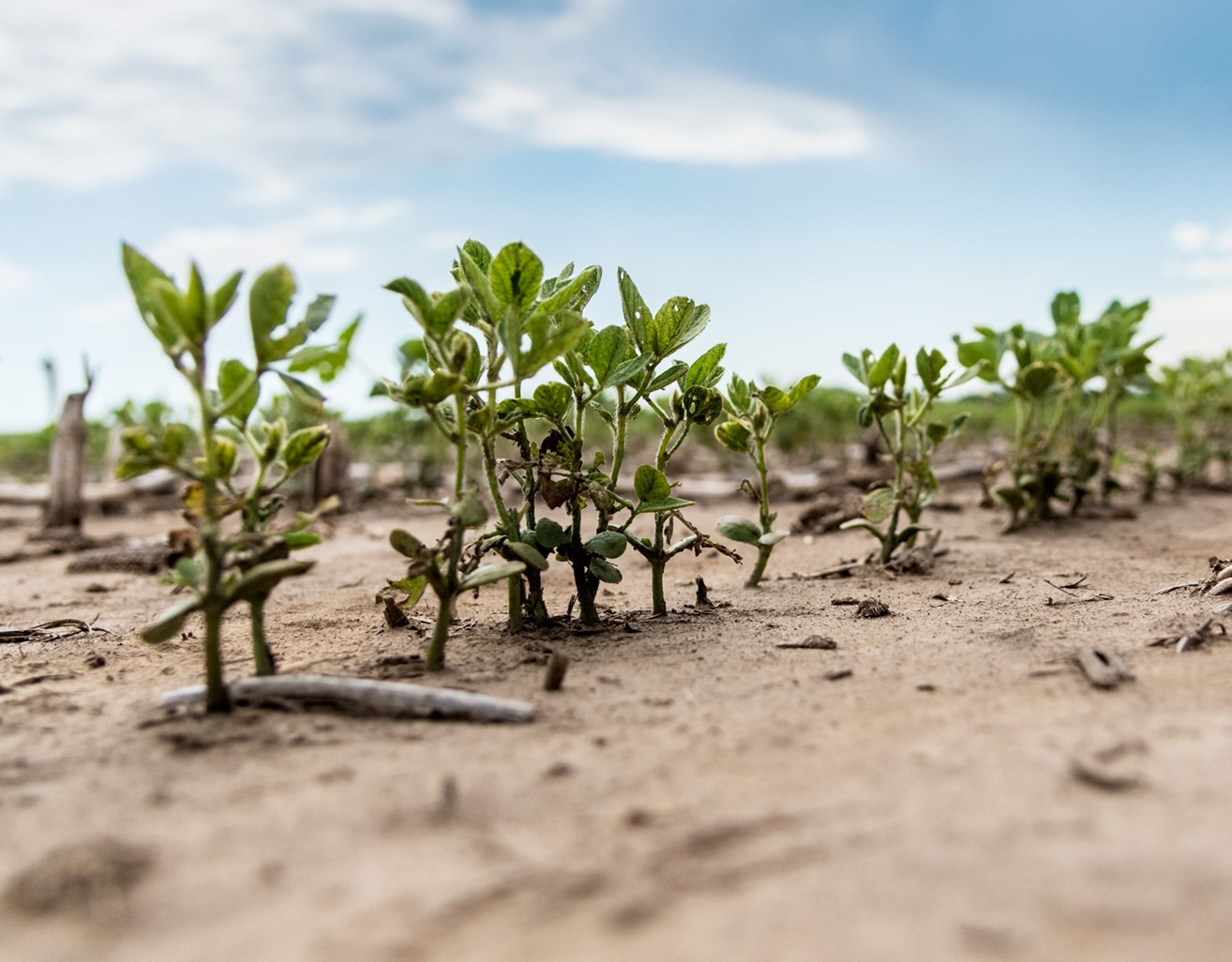

PPO herbicides used pre-emerge in soybeans helps control winter annual weeds and provides a long lasting residual which maximizes the net return per acre. Timing of application and weather will greatly impact the effectiveness of the product, as well as the health of the soybean plant.
Protoporphyrinogen oxidase (PPO) inhibiting herbicides are commonly applied residual herbicides used in soybeans. Flumioxazin (Valor) and sulfentrazone (Spartan) are popular PPO herbicides for soybean pre-emerge treatments. Under most growing conditions, soybeans are very tolerant to PPO herbicides with very little crop response when used as a pre-emerge treatment. Speckling of the cotyledon and unifoliate leaves may occur when rain or irrigation splashes soil containing the herbicide on to emerged plants. When serious injury does occur, it commonly is the result of a pre-emerge herbicide application made just before plant emergence, when the emerging plants start to crack open the soil.
PPO herbicides will cause the exposed plant cells to rupture, leaving a reddish colored lesion on the leaf or stem. Most of the time, the injury is not lethal and plants will continue to grow, but in serious cases a reduction in plant stand and yield loss is possible. Injury can make soybean stems brittle, and damaged cells will allow pathogens to infect the plant, which often leads to damping off a week or two after emergence.
Conditions that increase the likelihood of PPO herbicide related injury are; cool and damp weather following planting, or abnormally dry weather followed by a large rain event around plant emergence time. With the cold weather, the soybeans metabolize the herbicide slower than normal, causing an increase in plant injury. Soybean injury can also occur when soils stay dry after application, leaving a higher concentration of herbicide at or near the soil surface. Injury is more frequent on fields treated just before or just after planting than fields treated two to three weeks pre-plant.
To prevent injury, follow label directions, avoiding application after more than 3 days post planting. Consider applying PPO herbicides two weeks pre-plant, which allows more time for adequate rainfall to incorporate herbicides, and prevents a higher concentration of herbicide at the soil surface. Applications made up to four weeks before planting will still provide a long lasting residual because degradation of herbicides is much slower in colder soil temperatures. An additional advantage of earlier application is better control of winter annual weeds that usually require additional herbicides and/or higher rates when applied closer to planting time.